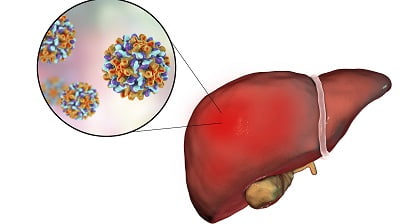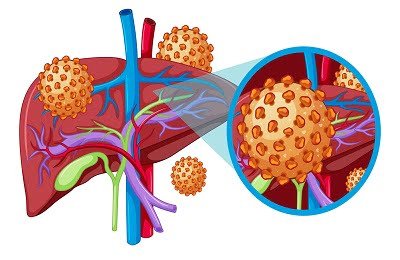Hepatitis B & C
Treatments
Hepatitis B
Epidemiology
Hepatitis B virus (HBV) infection is a significant global health concern, with an estimated 257 million people living with chronic HBV infection worldwide. It is endemic in many parts of Asia and sub-Saharan Africa but also affects populations in other regions. HBV can be transmitted through perinatal exposure, sexual contact, blood transfusions, and contaminated needles or medical instruments.

Virology
HBV belongs to the Hepadnaviridae family and is a partially double-stranded DNA virus. The virus primarily targets hepatocytes (liver cells) and can establish both acute and chronic infections. Chronic HBV infection is associated with an increased risk of cirrhosis, liver failure, and hepatocellular carcinoma (HCC).
Clinical Presentation
Acute Hepatitis B:
Many acute HBV infections are asymptomatic or cause mild flu-like symptoms. However, some individuals may develop jaundice, fatigue, abdominal pain, nausea, and dark urine. Acute HBV infection usually resolves spontaneously within six months in most cases.
Chronic Hepatitis B:
Chronic HBV infection is defined by the persistence of HBV surface antigen (HBsAg) for more than six months. Chronic hepatitis B can be asymptomatic or may lead to progressive liver disease, including chronic hepatitis, cirrhosis, and HCC. Some individuals may experience flares of liver inflammation and exacerbations of symptoms.
Diagnosis
Diagnosis of HBV infection involves serological testing for viral markers, including HBsAg, hepatitis B surface antibody (anti-HBs), hepatitis B core antibody (anti-HBc), and hepatitis B e antigen (HBeAg). Polymerase chain reaction (PCR) assays may be used to quantify HBV DNA levels and assess viral replication.
Management
Vaccination:
Hepatitis B vaccination is highly effective in preventing HBV infection and is recommended for all infants, adolescents, and high-risk individuals.
Antiviral Therapy:
Antiviral medications such as nucleos(t)ide analogs (e.g., tenofovir, entecavir) are used to suppress HBV replication, reduce liver inflammation, and prevent disease progression in patients with chronic hepatitis B.
Monitoring:
Patients with chronic HBV infection require regular monitoring of liver function tests, HBV DNA levels, and markers of liver fibrosis to assess disease activity and treatment response.
Prevention
Prevention strategies for HBV infection include vaccination, screening of blood donors, safe injection practices, use of barrier precautions during sexual activity, and avoidance of high-risk behaviors such as sharing needles or engaging in unprotected sex.
Treatments
Hepatitis C
Epidemiology
Hepatitis C virus (HCV) infection is a major cause of chronic liver disease worldwide, with an estimated 71 million people living with chronic HCV infection. HCV is primarily transmitted through percutaneous exposure to infected blood, such as injection drug use, unsafe medical injections, and transfusion of contaminated blood products.
Virology
HCV is a single-stranded RNA virus belonging to the Flaviviridae family. It exhibits significant genetic diversity, with multiple genotypes and subtypes circulating globally. Chronic HCV infection can lead to liver fibrosis, cirrhosis, and HCC over several decades.
Clinical Presentation
Acute Hepatitis C:
Acute HCV infection is often asymptomatic or causes nonspecific symptoms such as fatigue, jaundice, abdominal pain, and flu-like symptoms. Acute HCV infection may progress to chronic infection in the majority of cases.
Chronic Hepatitis C:
Chronic HCV infection is characterized by persistent viremia and ongoing liver inflammation. Many individuals with chronic hepatitis C are asymptomatic or have mild symptoms, but some may develop complications such as cirrhosis, liver failure, and HCC.
Diagnosis
Diagnosis of HCV infection involves serological testing for HCV antibodies (anti-HCV) and confirmation of viremia with HCV RNA testing. Genotypic testing may be performed to determine the specific HCV genotype, which guides treatment decisions.
Management
Direct-Acting Antiviral (DAA) Therapy:
The advent of highly effective direct-acting antiviral medications has revolutionized the treatment of chronic hepatitis C. DAAs target specific steps in the HCV replication cycle and can achieve high rates of sustained virologic response (SVR), leading to cure of the infection.
Monitoring:
Patients undergoing treatment for chronic hepatitis C require regular monitoring of liver function tests, HCV RNA levels, and assessment of treatment response. After successful treatment, ongoing monitoring is important to detect any potential relapse or reinfection.


